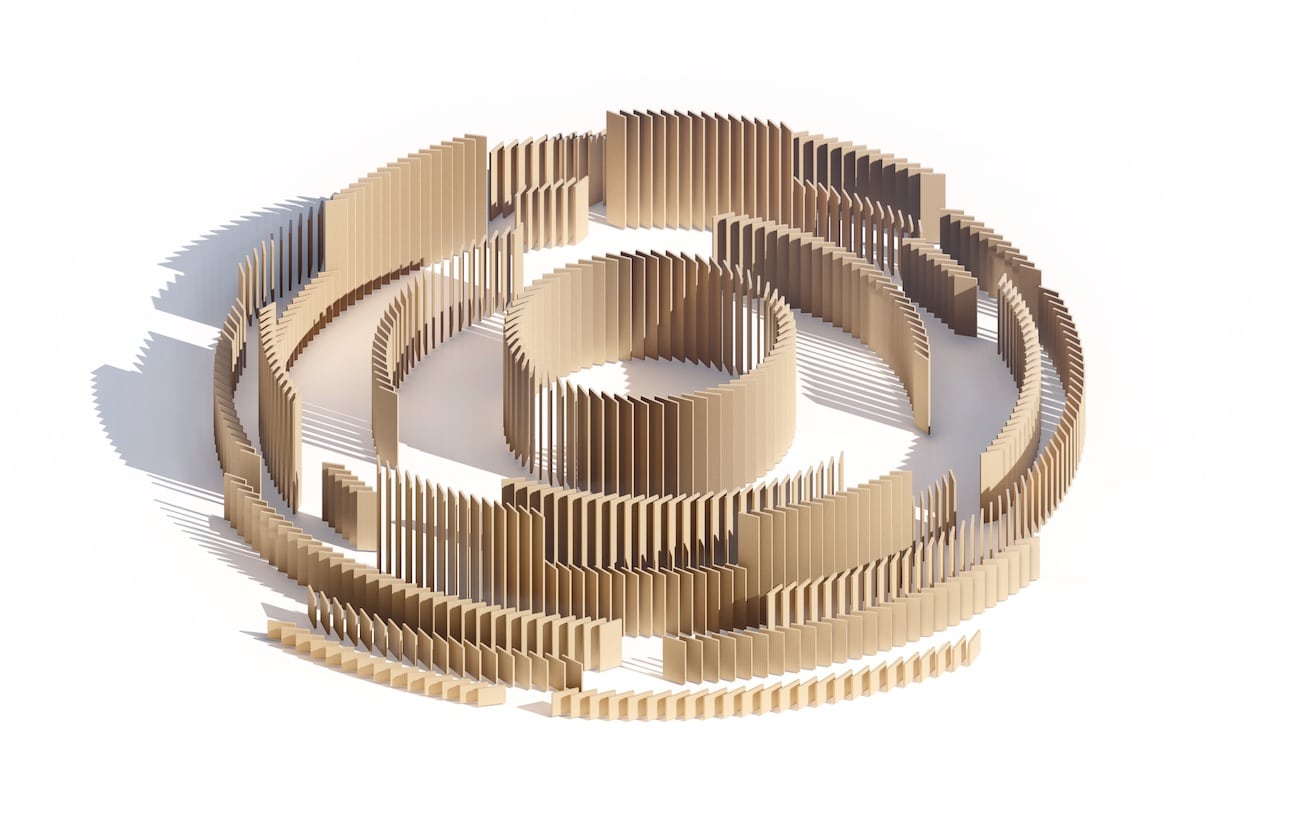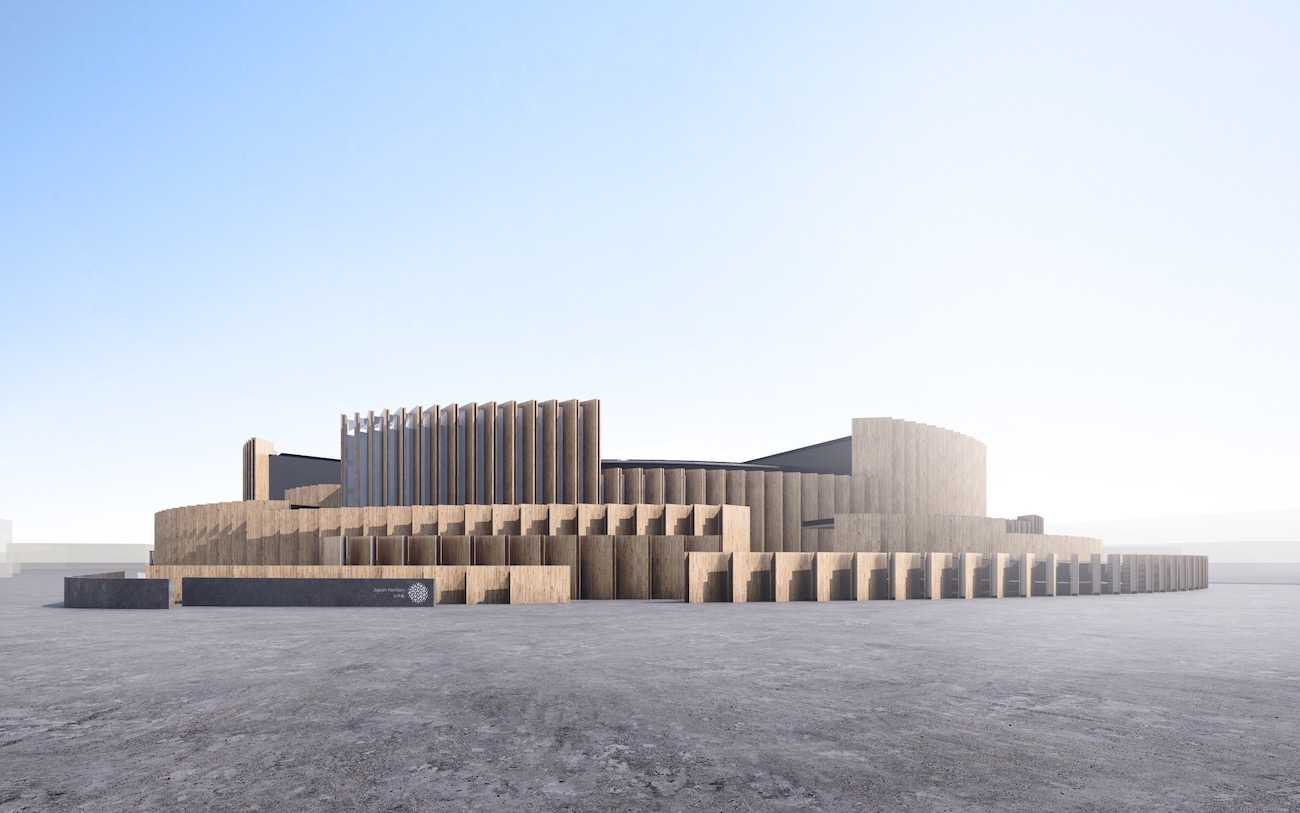
On April 13, 2025, the next World Expo will open in Osaka, Japan, featuring exhibitions and pavilions from more than 160 participating countries. The expo, which will run until October 13, 2025, centers around the theme of “Designing Future Society for Our Lives,” and is expected to attract over 28 million visitors from around the world. In the past few months, several architectural plans for national pavilions have already been revealed, including that of the host country itself.
Designed by Nikken Sekkei, the Japan Pavilion focuses on the concept of “Between Lives” and seeks to embody the cycle of life through its interconnected architecture. The pavilion unfolds across a circular structure constructed from a ring of wooden planks sourced from Japanese cedar that, upon the Expo’s conclusion, will be repurposed in building projects throughout Japan. Peering through the slats, visitors can glean both the pavilion’s interior and exterior, bridging the gaps between disparate spaces and visualizing the links between various stages of life.
The pavilion functions as a “living” organism as well, incorporating a biogas system that converts Expo waste into energy. Visitors can witness this process through an installation on-site, making visible the cyclical relationship between regeneration and decomposition. The pavilion also features three distinct zones that guide visitors through the Japanese aesthetic of junkan (meaning “circulation”), which understands life as bound by eternal connections.
“It’s not just us,” the pavilion’s overview states. “When an animal or plant, a thing, even a whole society, nears to the end of its role, part of it is carried on, transforming, taking on a new role. We all live through these connections.”
The Japan Pavilion is not only an extraordinary feat of sustainable design but a celebration of Japanese attitudes toward continuity. These subjects will be explored in the pavilion’s monthly online magazine through the Expo’s opening in 2025. The first issue, for example, is dedicated to junkan, while the second considers microorganisms and how humans interact with them.
To learn more about the Japan Pavilion and the traditions that inspired it, visit its official website.
The Japan Pavilion for the 2025 World Expo explores the cycle of life through its circular structure.

The pavilion visualizes how all lives are interconnected and unending with its sustainable, loop-like design.

The pavilion also publishes its own monthly magazine exploring the themes and Japanese traditions that inspired the structure.
View this post on Instagram
